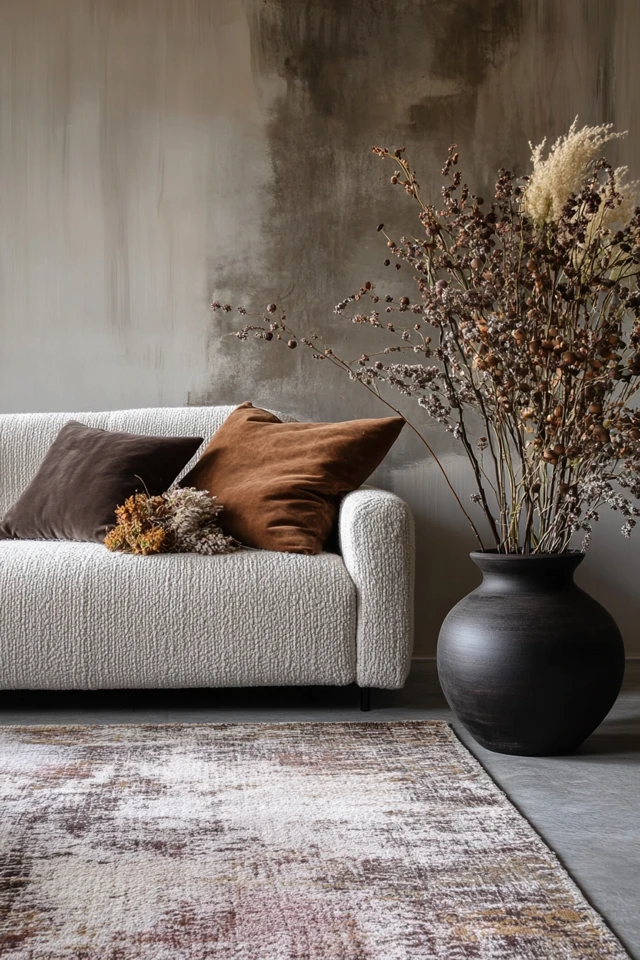Scandinavian design is known for its minimalist aesthetic, light neutral palette, and emphasis on natural materials. While the traditional Nordic look leans toward whites, greys, and light wood, introducing warm tones can create a cozier and more inviting atmosphere without losing the clean, calming essence of Scandinavian style. Warm tones like earthy terracotta, soft beige, rich caramel, and muted ochre add depth, balance, and personality to a living room, enhancing its hygge-inspired comfort.
My journey into using warm tones in Scandinavian living rooms started when I wanted to make my space feel more intimate during the colder months. While I loved the brightness of my white walls and light oak floors, it lacked the cozy warmth I was craving. I began by adding rust-colored throw pillows, a beige wool rug, and a caramel leather armchair. The transformation was instant—the room still felt minimalist, but it gained a new level of comfort and warmth.
If you want to bring a subtle glow and richness to your Scandinavian living room, incorporating warm tones is the way to go. These 10 tips will help you infuse warmth while maintaining the clean, timeless beauty of Nordic design.
The Perfect Design for You
Adding warm tones is ideal for anyone who loves Scandinavian design but wants to create a living room that feels more inviting, layered, and lived-in. It’s perfect for those who want to balance minimalism with a touch of coziness and color.
Imagine a bright living room with white walls, a soft beige sofa, and light oak furniture. A rust-colored wool throw is draped over the arm of the couch, and burnt orange cushions add a pop of warmth. A jute rug grounds the space, while a caramel leather armchair provides a rich, textured accent. Small details like terracotta planters, brass lighting, and amber glass vases bring a subtle glow, creating a harmonious blend of warmth and simplicity.
Picture Gallery
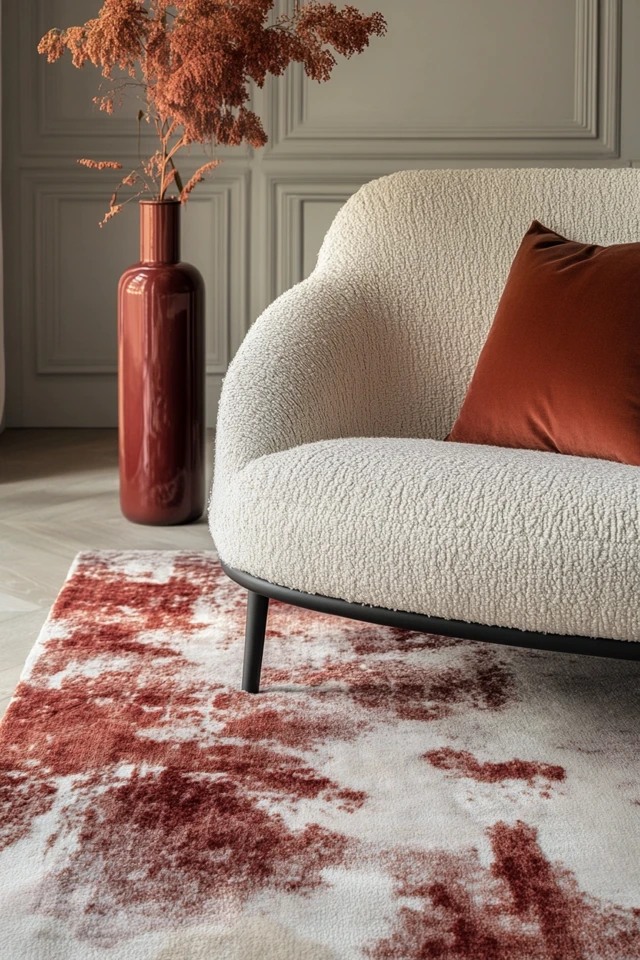
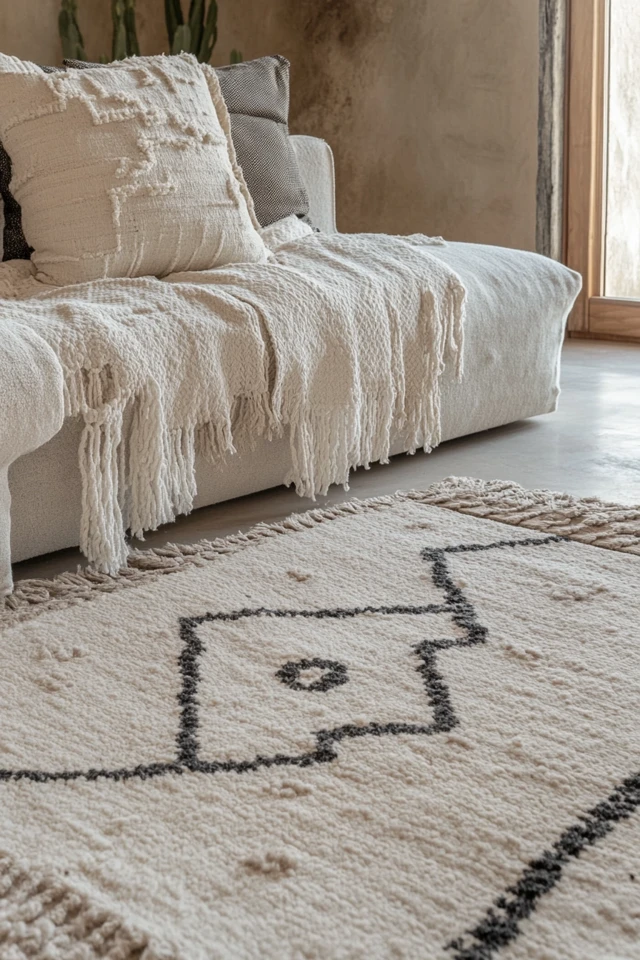

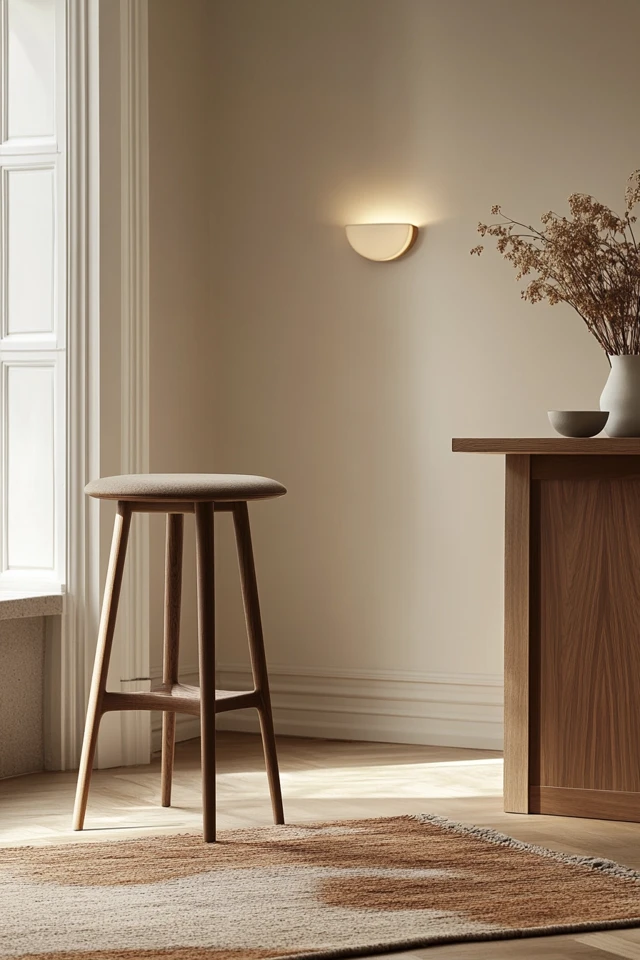
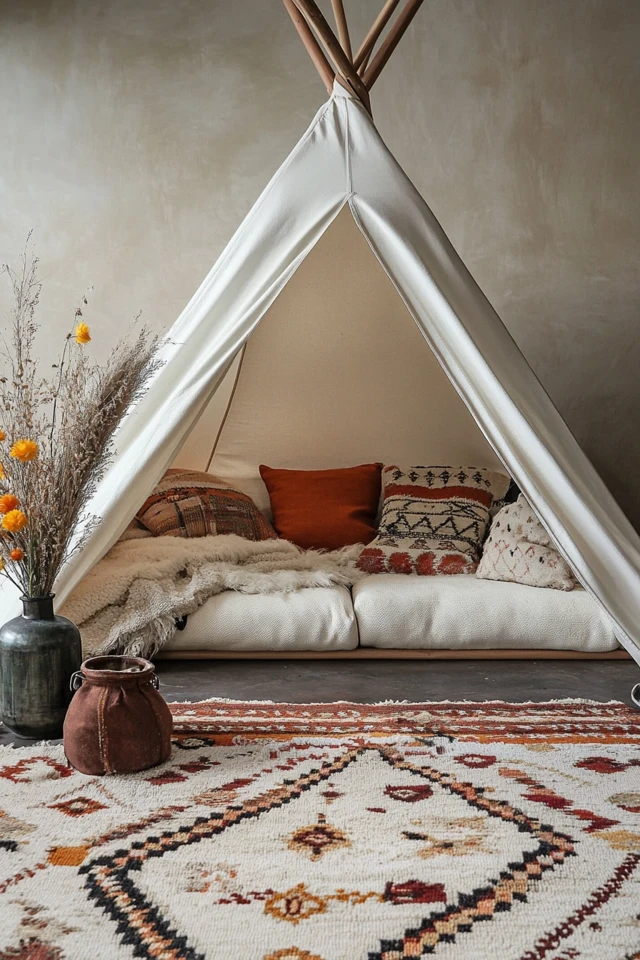
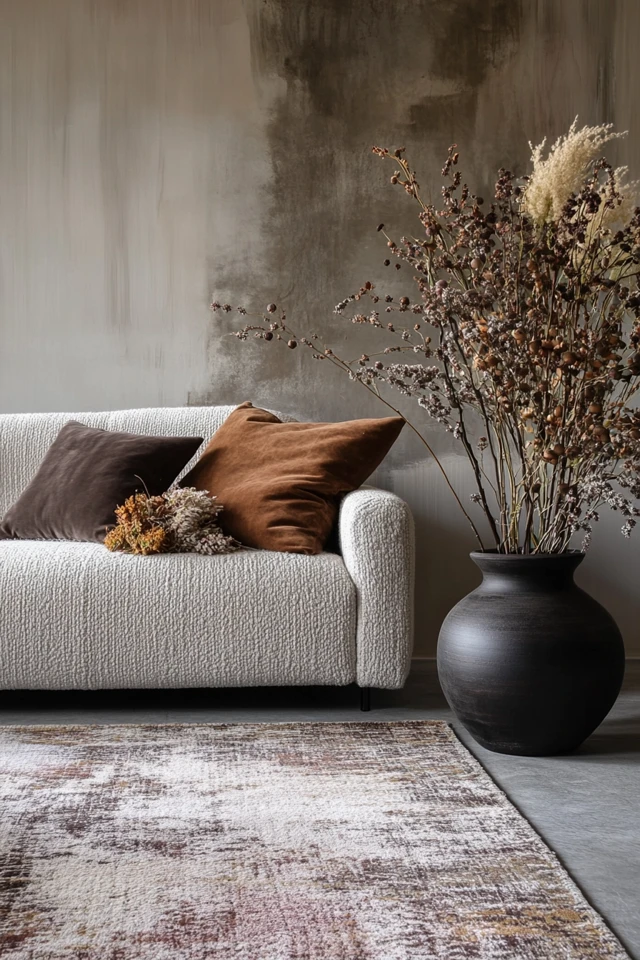
Why Warm Tones Work So Well in Scandinavian Living Rooms
Warm tones complement the cool, neutral palette of traditional Scandinavian design, adding contrast and depth while maintaining balance. Here’s why they’re so effective:
Key Elements:
- Cohesion With Nature: Scandinavian design emphasizes a connection to nature, and warm tones like terracotta, beige, and ochre evoke earthy, organic hues.
- Depth and Dimension: Warm tones add contrast to cool whites and greys, preventing the space from feeling too flat or sterile.
- Timeless Elegance: Muted warm tones like caramel, rust, and blush have a classic, enduring quality that aligns with Nordic simplicity.
- Seasonal Versatility: Warm tones create a cozy atmosphere during colder months and a sunny, inviting vibe in warmer seasons.
- Hygge Appeal: By introducing warm tones, you enhance the hygge-inspired coziness that’s central to Scandinavian design.
Warm tones bring balance to minimalist spaces, creating a more engaging and visually interesting living room that still feels serene and uncluttered.
10 Tips for Using Warm Tones in Scandinavian Living Rooms
1. Start With a Neutral Base
- Why It Works: Scandinavian design relies on a light, neutral foundation, which makes warm tones stand out beautifully.
- How to Do It:
- Keep walls and large furniture pieces white, beige, or light grey.
- Use warm tones in accents like pillows, throws, and smaller decor items.
2. Add Warm-Toned Textiles
- Why It Works: Textiles are an easy way to introduce warmth while enhancing the coziness of the space.
- How to Do It:
- Use rust-colored or ochre throw pillows on a neutral sofa.
- Layer a wool or knitted beige blanket for a soft, inviting touch.
3. Incorporate Warm Wood Furniture
- Why It Works: Warm-toned woods like walnut, teak, or oak add richness and an organic feel to the room.
- How to Do It:
- Choose a coffee table or sideboard in a medium or dark wood tone.
- Pair light wood flooring with darker wood accents for contrast.
4. Use Terracotta and Earthy Accents
- Why It Works: Terracotta adds a natural, rustic warmth that pairs perfectly with Scandinavian simplicity.
- How to Do It:
- Use terracotta planters or pottery as decor.
- Incorporate earthy-toned rugs or cushions with muted red or orange undertones.
5. Opt for Caramel Leather
- Why It Works: A caramel leather armchair or pouf adds both texture and warmth, creating a timeless focal point.
- How to Do It:
- Place a caramel leather armchair in a corner with a soft linen throw.
- Use leather accents like ottomans, pillow covers, or storage baskets.
6. Introduce Brass or Gold Metal Accents
- Why It Works: Warm metals add a subtle glow, enhancing the room’s hygge atmosphere.
- How to Do It:
- Use brass floor lamps, picture frames, or decorative bowls.
- Pair warm metals with natural materials like wood and glass to keep the look balanced.
7. Layer Rugs With Warm Undertones
- Why It Works: Rugs with beige, tan, or muted red tones ground the space and add depth.
- How to Do It:
- Use a jute or wool rug with subtle patterns or warm hues.
- Layer a smaller accent rug over a neutral base for added texture.
8. Incorporate Warm-Toned Art
- Why It Works: Artwork featuring warm tones can serve as a focal point while adding personality to the space.
- How to Do It:
- Choose abstract prints or photography with rust, ochre, or gold accents.
- Frame art in light wood or brass for a cohesive look.
9. Use Amber or Smoky Glass Decor
- Why It Works: Amber and smoky glass introduce warm, muted tones while adding an elegant, modern touch.
- How to Do It:
- Place amber glass vases or candle holders on coffee tables or shelves.
- Use smoky glass light fixtures for a soft, warm glow.
10. Balance Warm Tones With Cool Neutrals
- Why It Works: Cool neutrals like grey and white maintain the airy feel of Scandinavian design, while warm tones add contrast and depth.
- How to Do It:
- Pair warm-toned accents with grey sofas or white walls for a balanced look.
- Use warm tones sparingly to keep the space light and open.
FAQ Section
1. What are the best warm tones for Scandinavian living rooms?
- Muted warm tones like terracotta, rust, caramel, ochre, beige, and amber work beautifully in Scandinavian interiors.
2. Can I use warm tones in a small living room?
- Yes! Use warm tones in smaller accents like pillows, throws, or vases to avoid overwhelming the space.
3. How do I prevent warm tones from clashing with cool neutrals?
- Choose warm tones with muted, earthy undertones to ensure they blend harmoniously with whites, greys, and light woods.
4. Are there budget-friendly ways to add warm tones?
- Absolutely! Swap out pillow covers, add a warm-toned throw blanket, or use terracotta planters for an affordable update.
5. Can I mix warm and cool metal tones in a Scandinavian living room?
- Yes, but do so sparingly. Use warm metals like brass as the dominant tone, with cool metals like black or chrome as secondary accents.
Variations
Minimalist Warm Scandinavian Living Room
- Focus on a white and beige palette with subtle rust or caramel accents for a clean, understated look.
Rustic Warm Scandinavian Living Room
- Use weathered wood furniture, terracotta planters, and earthy textiles for a cozy, rustic vibe.
Modern Warm Scandinavian Living Room
- Add bold accents like amber glass decor, brass lighting, and geometric patterns for a contemporary twist.
How to Showcase It
Seasonal Changes
- Introduce deeper warm tones like burnt orange in fall and lighter shades like peach or blush in spring.
Holiday Gatherings
- Use warm-toned candles, throws, and gold accents to create a festive, inviting space.
Everyday Serenity
- Keep warm tones subtle and layered for a calming, hygge-inspired atmosphere year-round.
Post-Renovation Reveal
- Highlight how the addition of warm tones transformed your Scandinavian living room in before-and-after photos.
Occasions to Feature It
- Family Gatherings: Use warm tones to create a welcoming space for entertaining guests.
- Cozy Nights In: Layer warm throws and soft lighting for the ultimate hygge experience.
- Everyday Relaxation: Balance warm accents with clean lines and neutral tones for a serene living room.
Conclusion
Adding warm tones to a Scandinavian living room is a simple yet transformative way to enhance its comfort, depth, and personality. By incorporating earthy colors, natural materials, and layered textures, you can create a space that feels both stylish and inviting.
Start experimenting with these tips to infuse warmth into your Scandinavian living room. Whether you’re adding terracotta accents, a caramel leather chair, or brass lighting, the result will be a harmonious blend of simplicity and coziness that feels like home.

